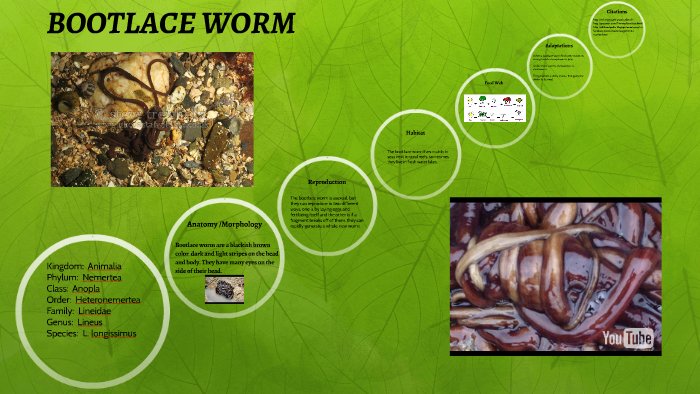
Bootlace worms are not your average worm. They can grow incredibly long—up to 30 meters in length! It’s hard to believe that something so slender can stretch to such impressive sizes. If handled properly, bootlace worms offer a unique opportunity to teach about marine life’s complexity and beauty. But, like any delicate creature, they require specific handling methods to keep them safe and happy.
Understanding Bootlace Worms
Bootlace worms belong to a group called *Lineus*, which makes them part of the marine polychaete family. These worms are commonly found in shallow waters, especially in sandy, muddy environments. One interesting fact about these worms is their ability to regenerate—if they’re cut, they can regrow parts of their bodies. This fascinating characteristic makes them a perfect subject for hands-on learning.
Now, you might be wondering what they actually look like. Bootlace worms are long and thin, often appearing in a variety of colors ranging from yellow to brown. What’s truly amazing is their movement. They glide smoothly through the water, almost as if they’re dancing. This fluid motion can be mesmerizing, making them a great attraction for educational displays.
Why Safety Is Important
When working with bootlace worms, safety should always be your top priority. These marine creatures might look harmless, but mishandling them can lead to stress or injury for both the worm and the handler. Imagine holding a delicate flower: too much pressure can crush it, while gentle hands can help it bloom beautifully. The same goes for bootlace worms.
Another reason safety is essential is that the slimy secretion from bootlace worms can irritate skin or cause allergic reactions in some people. So, even if you think you know how to handle them, it’s crucial to take precautions. Understanding these factors ensures that your educational display remains enjoyable and informative without compromising anyone’s health or safety.
Preparing for Handling Bootlace Worms
Before you even think about handling bootlace worms, preparation is key. Start by gathering the right supplies. You’ll need:
- Protective gloves: These will help you avoid direct contact with the worm’s skin.
- A soft, damp cloth: This can be used to support the worm without causing harm.
- A container: This is essential for transporting the worm safely to your display area.
Having everything organized beforehand allows you to focus on the handling process itself. It’s like setting up a coffee date—you want everything in place so you can enjoy the conversation without distractions.
Handling Bootlace Worms Safely
Now that you’re prepared, let’s talk about the actual process of handling bootlace worms. Here’s a step-by-step guide to ensure safety for both you and the worm:
1. Wear Protective Gloves: Always start by putting on your gloves. This is your first line of defense against any potential reactions.
2. Use a Container: Gently pick the worm up using the soft, damp cloth and place it in the container. Keep it low to the ground and avoid sudden movements.
3. Calm Movements: Handle the worm gently, avoiding squeezing it. Remember, it’s a living creature; think of it like holding a small fish—too much pressure can hurt it.
4. Keep It Moist: If you’re transporting the worm, ensure the container has some seawater or a damp environment. The moisture keeps the worm comfortable and reduces stress.
5. Limit Handling Time: Try to minimize the time the worm is outside its natural habitat. The quicker you can return it to a safe environment, the better.
By following these steps, you create a safe and enjoyable experience for everyone involved.
Educating Others about Bootlace Worms
Once you’ve successfully handled the bootlace worm, it’s time to share this fantastic learning experience with others. Here are some engaging ways to educate your audience:
– Interactive Demonstrations: Allow students to observe the worm’s movements in a secure environment. This hands-on approach helps them connect with nature and appreciate marine life.
– Visual Aids: Use posters or digital screens to showcase interesting facts about bootlace worms, their habitat, and their regenerative abilities. A picture is worth a thousand words!
– Q&A Sessions: Encourage questions from your audience. This interaction not only piques curiosity but also deepens their understanding of the subject.
These methods can turn a simple exhibit into an engaging learning experience that leaves a lasting impression on your audience.
Alternatives to Live Displays
If handling bootlace worms seems daunting, or you’re concerned about their well-being, consider alternatives for your educational display. Here are a few ideas:
1. Videos: Show clips of bootlace worms in their natural habitat. There’s something about seeing them move freely that can captivate an audience.
2. Models: Use 3D printed models to demonstrate their size and structure. This way, everyone can get a close-up view without any risk.
3. Diagrams and Illustrations: Detailed illustrations can help explain their anatomy and functions. Classroom materials can be tailored to different age groups to enhance their learning experience.
Choosing alternatives allows you to educate without compromising the health of these unique creatures.
Handling bootlace worms for educational display can be a rewarding experience that sparks curiosity about marine life. By taking safety precautions, educating yourself and your audience, and choosing the appropriate methods to interact with these fascinating creatures, you can create an unforgettable learning environment.
Whether you’re handling them directly or opting for alternatives, the key is to respect these delicate animals and share their wonders with others. After all, education is about sharing knowledge and fostering appreciation for the intricate beauty of our natural world.
